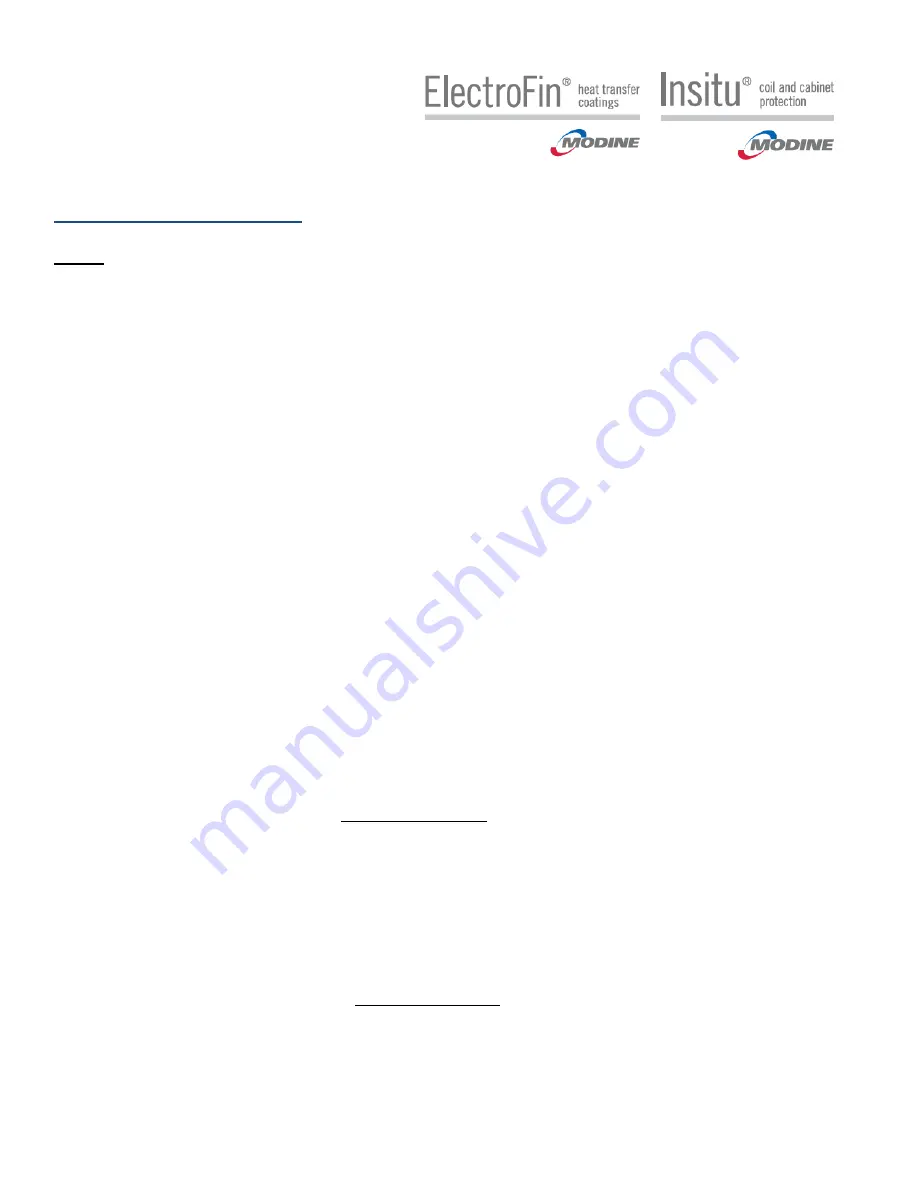
DETAILED INSTRUCTIONS:
SCOPE:
The
Warranty Protection plan consists of a two-step process. Step 1 is to clean the coils and step 2 is to remove the salts/chlorides.
The
coils are to be thoroughly cleaned using an approved coil cleaner as listed above in table 1. Once cleaned, they will then need
to have the chlorides/salts removed by using preferred chloride remover as listed above in table 2.
1
Complete the coil cleaning following these steps.
1.1
Ensure that the power to the unit is off and locked out.
1.2
Clean the area around the unit if needed to ensure leaves, grass or loose debris will not be blown into the
coil.
1.3
Remove panels or tops as required gaining access to the coil(s) to be cleaned.
1.4
Using a pump up sprayer, fill to the appropriate level with potable water and add the correct amount of
approved cleaner as per manufacture instructions leaving room for the pump plunger to be reinserted.
NOTE: Coils should always be cleaned / back flushed, opposite of airflow to prevent impacting the dirt into the coil.
1.5
If the coils have heavy dirt, fibers, grass, leaves etc. on the interior or exterior face areas, a vacuum and
brush should be used to remove those surface contaminants prior to applying cleaner. The interior floor,
drain tray or pan areas should also be vacuumed.
1.6
Apply the mixed cleaner to coil surfaces using a pressurized pump up sprayer maintaining a good rate of
pressure and at a medium size nozzle spray, (not a solid stream and not a wide fan but somewhere in the
middle). Work in sections/panels ensuring that all areas are covered and kept wetted.
1.7
Apply the cleaner to unit interior air exiting side coil surfaces first. Work in sections/panels moving side
to side and from top to bottom.
1.8
Generously soak coils by spraying cleaner directly on and into the fin pack section to be cleaned and allow
the cleaning solution to soak for 5 to 10 minutes.
1.9
Using pressurized potable water, (< 100 psi), rinse the coils and continue to always work in sections/panels.
Start at the top of the coil and slowly move vertically downward to the bottom. Then, staying in the same
vertical area, slowly move back up to the top where you started. Now move over slightly overlapping the area
just completed and repeat above. Continue until all coil areas on the inside of the unit have been rinsed.
1.10
Complete steps 1.5-1.9 for the exterior air entering side of the coils.
1.11
Final rinse – Now complete a quick rinse of both sides of the coil including the headers, piping, u-bends
and hairpins.
1.12
If the coil has a drain pan or unit floor that is holding rinse water or cleaner, extra time and attention will
need to be taken in those areas to ensure a proper rinse has been completed.
Warranty Protection Step 1 of 2






















